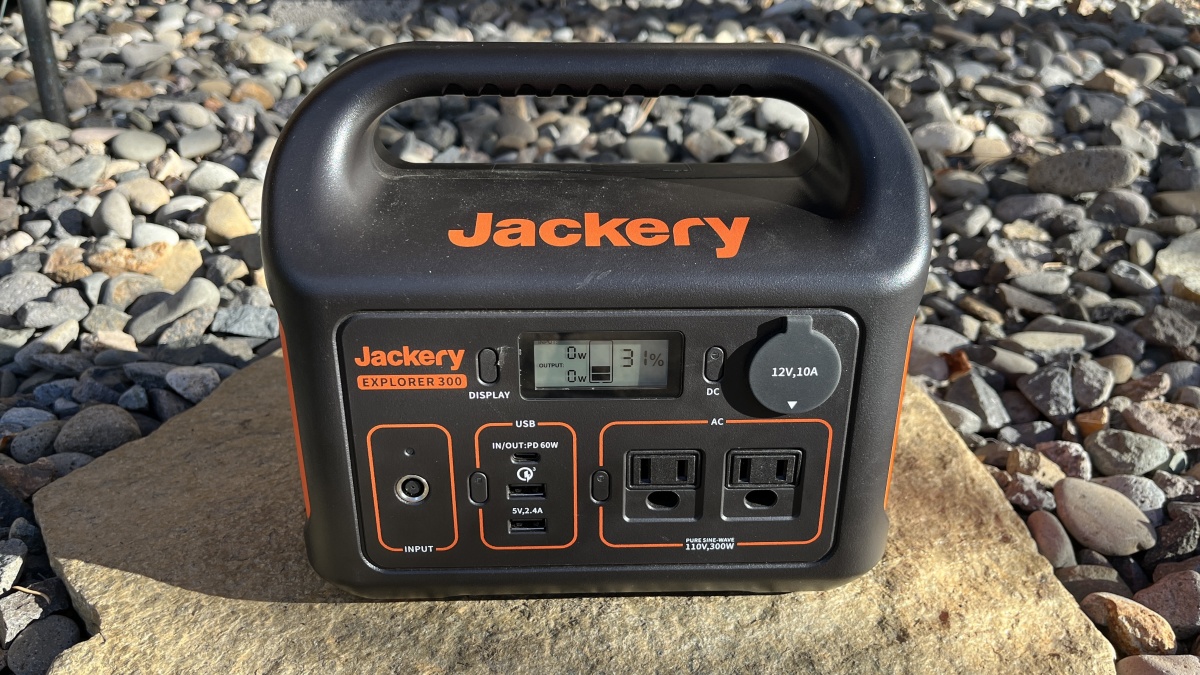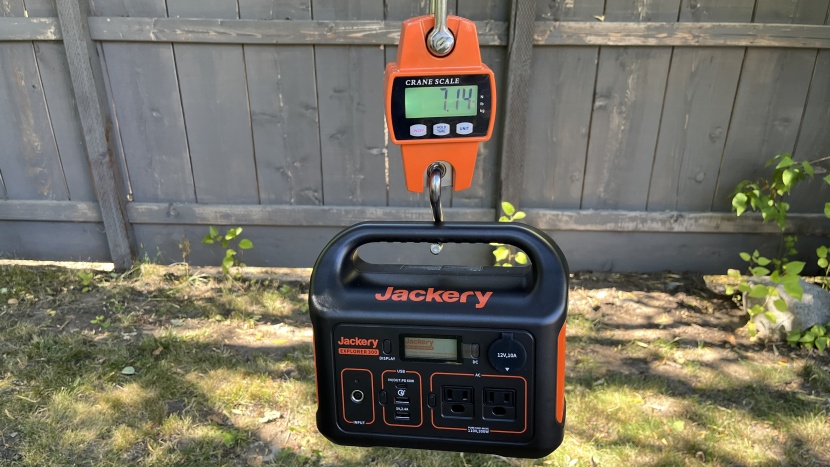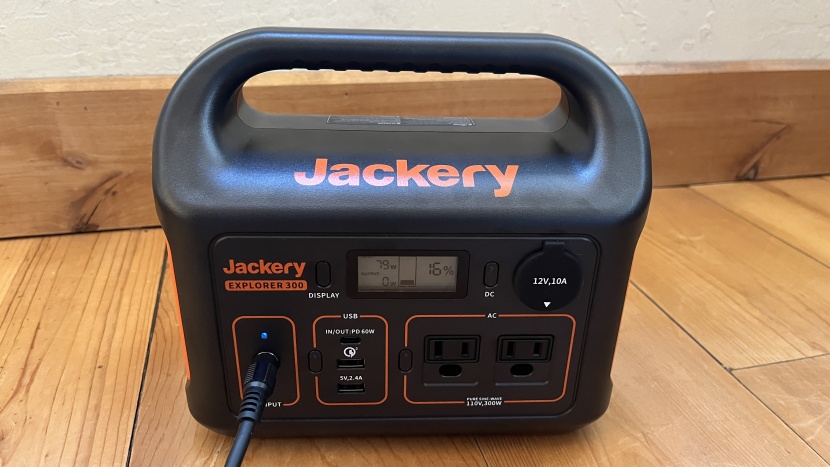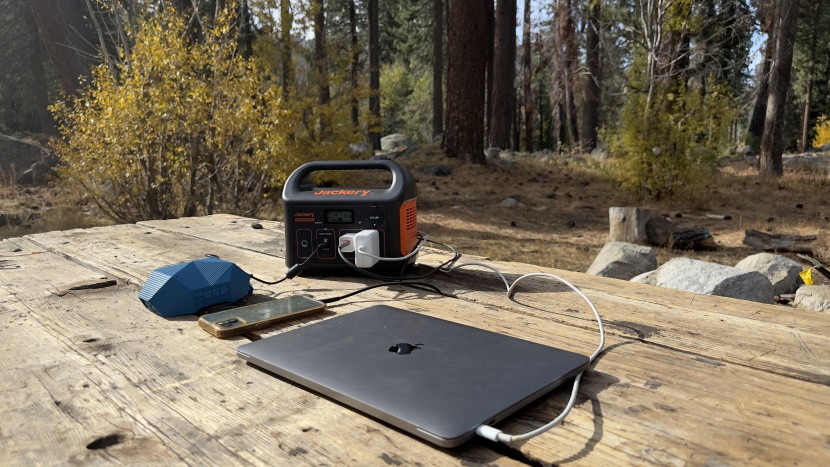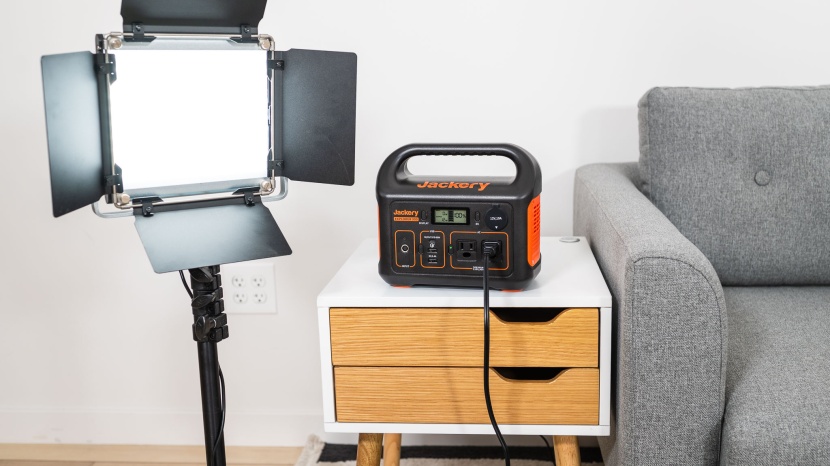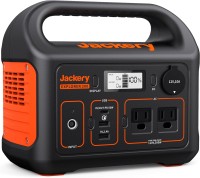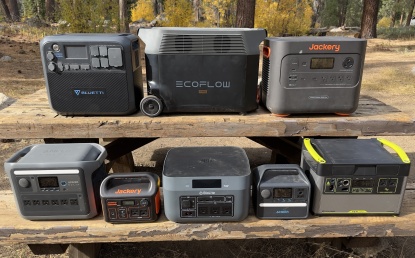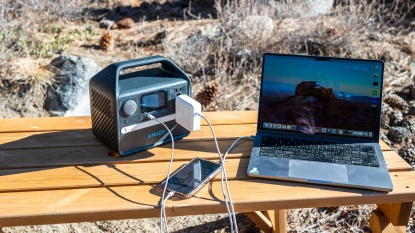
Our Verdict
Our Analysis and Test Results
The Jackery 300 offers decent power performance in an enticingly compact package. Its lightweight design makes it the perfect choice to toss in your backpack before heading out.
Power Output
The Explorer 300 delivered 247 Watt-hours (Wh), which makes it one of the smaller batteries in our tests and one of the lower performers in this metric. That is not surprising considering its smaller size. It is ideal for small camping applications, not for when the power goes out at home. For example, it can recharge a typical laptop about three times or a phone nearly 80 times, but it won't be able to run the average refrigerator if the power goes out. We were only able to run our Starlink off this for about five hours.
Portability
Above all else, the Jackery 300 is extremely portable. Weighing only 7.1 pounds, this compact power station can be easily stashed in your backpack and carried around with its built-in handle. It was our first choice when heading outside the house with our laptop. The handle is large and comfortable to hold.
Charge Time
The Jackery 300 falters here. For such a relatively small battery, it took four hours to charge from a wall outlet. By comparison, many batteries that are eight times larger will charge two to three times faster.
One positive aspect of this unit is its ability to charge with a USB-C cord, which is great if you can't find the AC wall outlet cord. The 300 also supports up to 100 watts of solar input. With a 100-watt panel, the Jackery takes about 4-5 hours to charge under ideal conditions. It can also be charged with an included carport cable.
Features
A simple power station, the Jackery 300 won't wow you with features. Its small form means limited usability is to be expected, such as the absence of expansion capabilities and emergency power supply capabilities.
We would have liked to see a built-in light on the Jackery 300, a common feature equipped on many smaller power stations. The display is also quite limited, providing only basic information, such as power input/output wattage and remaining battery, displayed as a percentage. Most notably, when drawing power, its display is missing the remaining discharge time, which is information that can be handy when determining how long a device can be run.
Should You Buy the Jackery 300?
The Jackery 300 won't blow you away with features or ultra-fast charging speeds, but its value lies in its highly compact design and extremely effective and efficient battery. Whether it's your first introduction to portable power or you're looking to expand your power station collection to charge smaller devices, this power station deserves consideration.
What Other Portable Power Station Should You Consider?
More demanding power needs? Check out the Bluetti AC200 Max for high power output and a no-frills design. The Anker 521 is a similar-sized small-form power station with a built-in light offered at a budget-friendly price. Another favorite of ours from Jackery, the Jackery Explorer 2000 Plus, is the ultimate large-form power station for running larger appliances, with a battery capacity big enough for multiple days of off-grid use.
| Awards | Best Buy for Phones and Laptops |
|---|---|
| Price | $279 List Check Amazon (on sale!) |
Overall Score  |
|
| Star Rating | |
| Bottom Line | An ultra-portable power station that is well suited to recharging phones and laptop devices |
| Pros | Small and lightweight, great for phones and laptops, solar panel compatible |
| Cons | Only works with low-wattage appliances, limited run-time |
| Rating Categories | Jackery Explorer 300 |
| Power Output (60%) | |
| Portability (25%) | |
| Charging Speed (10%) | |
| Features (5%) | |
| Specifications | Jackery Explorer 300 |
| Measured Power Output | 260 Wh |
| Max AC Watts | 300 watts |
| Max AC Amps | 2.5 amps |
| Measured Weight | 7.1 lbs |
| Power Outlets | (5) AC (4) USB-A (1) USB-C (1) Car Outlet (12V) |
| Claimed Capacity | 293 Wh |
| Usable Capacity | 89% |
| Dimensions | 9.1"L x 5.2"W x 7.8"H |
| Max. AC Surge Wattage | 500 watts |
| Time to Charge | 4.0 hr |
| Measured Charging Speed | 74 Wh/hr |
| Solar Compatible | Yes |
| Max Solar Panel Watts | 100 watts |
| Battery Chemistry | Lithium-ion |
| Claimed Cycle Life | 800 |
| AC Output Power (Bypass Mode) | No |
| App | No |
| Expandable Battery Capacity | No |
| Uninteruptible Power Supply (UPS) | No |
| Built in Light | No |
| Warranty | 2 year |


